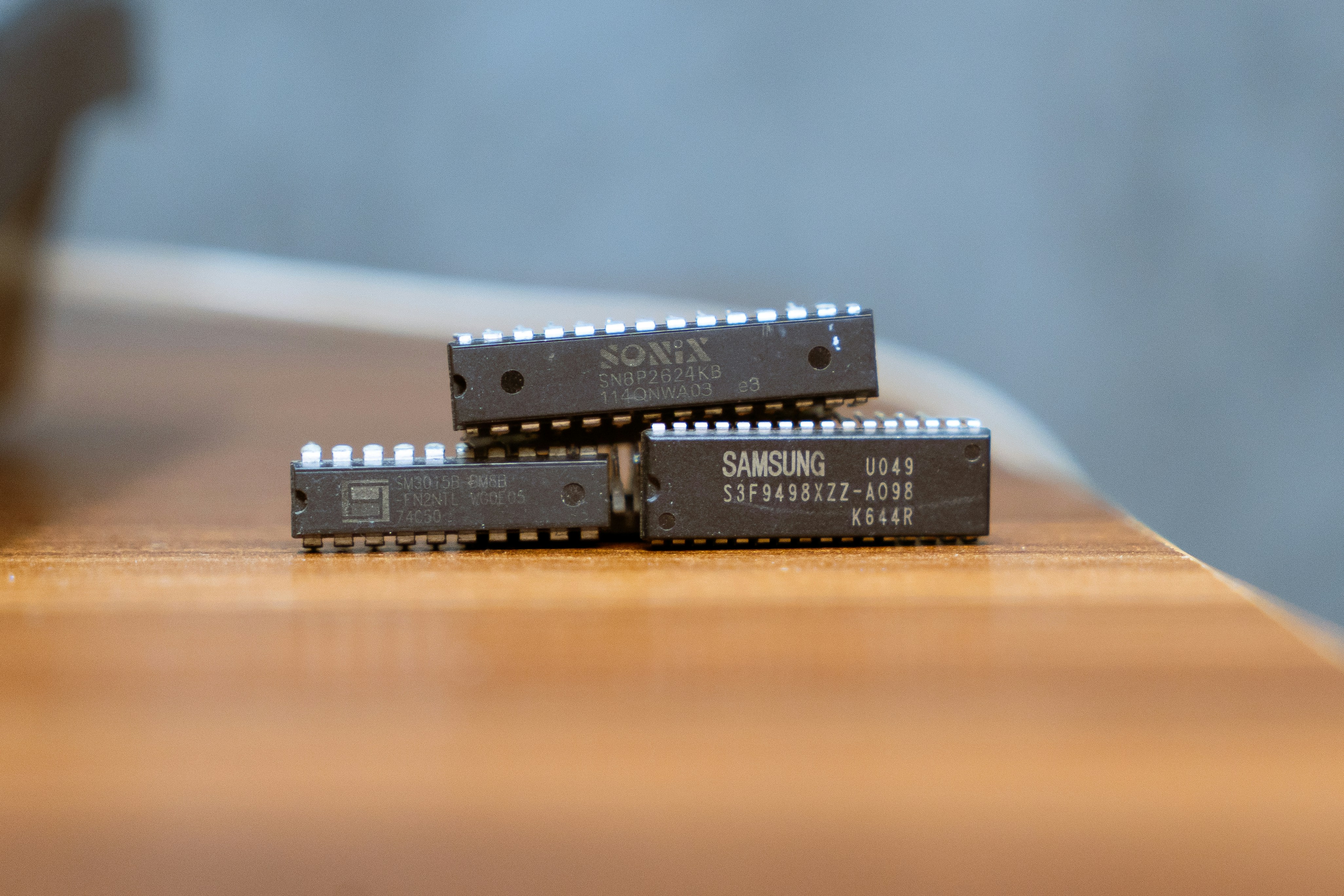
Top 10 Best UK Universities for Semiconductor & Micro-Electronics Degrees (2025 Guide)
Semiconductors power everything from smartphones to satellites, and the UK’s compound-semiconductor clusters, silicon-photonics foundries and emerging SiC supply chains are crying out for skilled engineers. Below you’ll find ten universities whose 2025 undergraduate or postgraduate pathways deliver world-class training in semiconductor devices, fabrication and design.
How we selected the ten
• Reputation – 2024‑25 THE/QS Electrical & Electronic Engineering and Materials rankings plus REF impact scores.• Dedicated pathways – Named semiconductor or micro‑nano degrees, or compulsory device tracks within EEE programmes.• Fab & lab access – Modern class‑100/‑1000 clean rooms, MOCVD/MBE lines, Europractice MPW shuttle slots.• Research horsepower – Flagship EPSRC centres, Innovate‑UK Catapult projects, high citation impact.• Industry traction – Active links to ARM, IQE, Pragmatic, Wolfspeed, Nexperia, paid placements and Catapult projects.
--------|-----------------------| | Reputation | 2024‑25 THE/QS EEE & Materials standings + REF 2021 scores | | Dedicated pathways | Named BEng/BSc/MSc Semiconductor, Micro‑nano, Photonics or core device tracks in EEE courses | | Fab & lab access | Class‑100/‑1000 clean rooms, MOCVD/MBE lines, MPW (Europractice) shuttle slots | | Research horsepower | Flagship EPSRC centres, Innovate‑UK Catapult projects, world‑class citation impact | | Industry traction | Links to ARM, IQE, Pragmatic, Wolfspeed, Nexperia, Silicon Photonics Catapult, paid placements |
1 University of Cambridge
Programmes – Four‑year MEng Electrical & Information Engineering (E&IE) offers advanced semiconductor electives; the one‑year MPhil Micro & Nanotechnology Enterprise blends device physics with venture creation.
Modules – Semiconductor Device Physics • Clean‑Room Processing & Lithography • Silicon‑Photonics Circuits • Spintronics.
Research & facilities – The Cambridge Graphene Centre and Nanoscience Centre provide e‑beam lithography, 2‑D transfer and Raman metrology. Cambridge researchers also contribute to the UK EPSRC GaN programme led by Newcastle & Sheffield.
Industry links – ARM HQ, Qualcomm Cambridge, Pragmatic Semi, and Illumina Genomics in the local “Silicon Fen.”
Admissions – AAA (Maths & Physics) for undergrad; MPhil requires a first and prior wet‑lab exposure.
2 University of Sheffield
Programmes – MSc Semiconductor Photonics and Electronics and IET‑accredited MEng Electronic Engineering.
Modules – Compound‑Semiconductor Growth (MBE/MOVPE) • Wide‑Bandgap Power Electronics • Device Reliability & Failure Analysis.
Research – National Epitaxy Facility + Royce Discovery Centre with MOVPE, wafer‑bonding, III‑V on silicon.
Industry – IQE, Rolls‑Royce, UKAEA fusion electronics; built‑in industrial year on most MEng routes.
Admissions – AAB + Maths/Physics; 2:1 for MSc.
3 Imperial College London
Programmes – MSc Analogue & Digital Integrated‑Circuit Design (IC Design) and semiconductor‑focused MEng EEE.
Modules – CMOS Analogue IC • Millimetre‑Wave RF • Semiconductor Device Tech • 3‑D IC Packaging.
Research – Class‑100 clean room for silicon photonics and GaN HEMTs; Cadence flows run on CPU farms while CX3/HX1 (~216 GPUs) power AI‑assisted circuit exploration.
Industry – Apple, Graphcore, Imagination; start‑ups incubate at Imperial White City.
Admissions – 1st/strong 2:1 EEE/Physics; SPICE & Matlab expected.
4 University of Southampton
Programmes – MSc Nanoelectronics & Photonics; MEng Electronic Engineering via ECS + Zepler Institute.
Modules – Silicon‑Photonics Design • Advanced CMOS • Power Semiconductor Devices • Photonic Integration.
Research – 1 000 m² class‑100/-1000 Southampton Nanofabrication Centre with DUV stepper, plasma etch, ion‑implant.
Industry – Nexperia, Huawei Photonics, Leonardo; many paid summer placements.
Admissions – ABB (BEng) / 2:1 (MSc); highlight any clean‑room logbook.
5 Cardiff University
Programmes – MSc Compound Semiconductor Devices, unique globally; ties to UK Compound Semiconductor Centre.
Modules – III‑V Growth & Characterisation • RF & Microwave Devices • Power‑Electronics Packaging.
Research – Shared 8‑inch GaN & SiC pilot line; on‑wafer THz probe stations.
Industry – South Wales CS cluster: IQE, Microchip, SPTS, CS Catapult.
Admissions – 2:1 Physics/EEE/Materials; statement must show compound interest (pun intended).
6 University of Manchester
Programmes – MSc Power Electronics, Machines & Drives with SiC/GaN options; semiconductor electives in MEng EEE.
Modules – Wide‑Bandgap Devices • Power IC Packaging & Thermal • Nano‑Characterisation Techniques.
Research – £60 m Graphene Engineering Innovation Centre hosts wafer‑scale CVD graphene, 2‑D heterostructures.
Industry – Siemens, Bentley, National Grid ESO; Royce Institute PhD routes.
Admissions – 2:1 + Matlab/Python.
7 University of Glasgow
Programmes – MSc Electronics & Electrical Engineering with Semiconductor‑Tech route.
Modules – III‑Nitride Optoelectronics • Nano‑CMOS Fabrication • Quantum Transport in 2‑D Materials.
Research – £16 m James Watt Nanofabrication Centre with 193 nm DUV stepper and 5 nm e‑beam lithography; MOCVD for GaN/AlGaN.
Industry – STMicro, Intel Ireland, Scottish‑Power renewables; UV‑LED spin‑outs.
Admissions – 2:1; solid‑state physics coursework necessary.
8 University of Warwick
Programmes – MSc Power Electronics & Drives (SiC focus) via School of Engineering + WMG.
Modules – SiC/GaN Processing • Gate‑Drive Circuits • Power‑Module Reliability.
Research – Midlands SiC Cluster: 1 200 V test platform, automotive inverter rigs.
Industry – Jaguar Land Rover, Dynex, Wolfspeed partnerships; EPSRC CDT in Sustainable Materials.
Admissions – High 2:1 EEE/Physics; industry experience an advantage.
9 Newcastle University
Programmes – MSc Microelectronics & Nanotechnology; BEng/MEng EEE with ASIC & power tracks.
Modules – Analogue & Mixed‑Signal IC • MEMS & Sensors • ASIC Verification (VHDL/Verilog).
Research – Class‑1000 MEMS clean room; Cadence/PADS farm; Europractice MPW shuttle.
Industry – AMD, Dialog, ARM; national centre for power‑electronics packaging.
Admissions – ABB / 2:1; VHDL/Verilog portfolio recommended.
10 University of Surrey
Programmes – MSc Nanotechnology & Renewable Energy with semiconductor options; routes in MEng EEE.
Modules – Quantum‑Dot Devices • High‑Frequency III‑V • Thin‑Film Photovoltaics.
Research – ALD + sputter lines (6‑inch) for ZnO transparent electronics; MBE reactors for InGaAs lasers.
Industry – IQE, Oxford Instruments, Airbus; Surrey Space Centre rad‑hard chip projects.
Admissions – BBB / 2:1; nanofab or photovoltaics experience boosts application.
Final tips
Pick your niche – Silicon photonics → Southampton; Wide‑bandgap power → Sheffield/Warwick; Compound semis → Cardiff; 2‑D/graphene → Cambridge/Manchester.
Lab access matters – A modern class‑100 clean room or MPW shuttle slot is gold for your CV.
Placements – Sheffield, Southampton, Cardiff embed year‑long industry roles; Imperial & Cambridge offer summer chip‑design internships.
Software prep – Cadence Virtuoso, Keysight ADS, COMSOL, LT‑Spice; brush up before term.
Scholarship deadlines – EPSRC & UKRI studentships close by Jan 2025 for Oct 2025 entry.
Disclaimer & fees
Guide reflects publicly available data June 2025. UK‑resident MSc tuition (2025): Sheffield ~£12.1 k, Southampton £12.6 k, Cardiff £11.4 k, Imperial £38 k, etc. Universities will publish 2026 rates in early 2025. Always verify modules, fees, and sponsorships directly.


